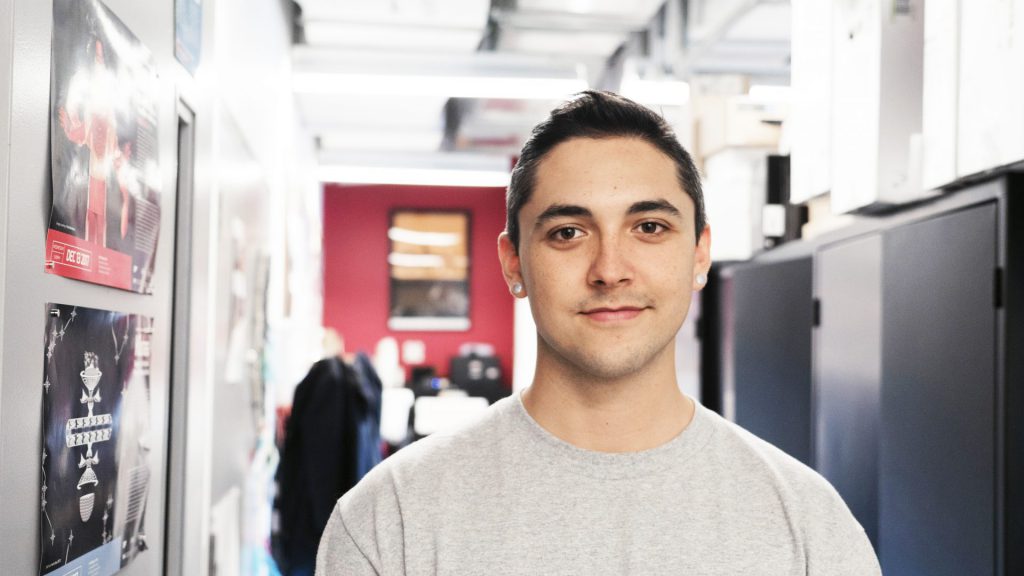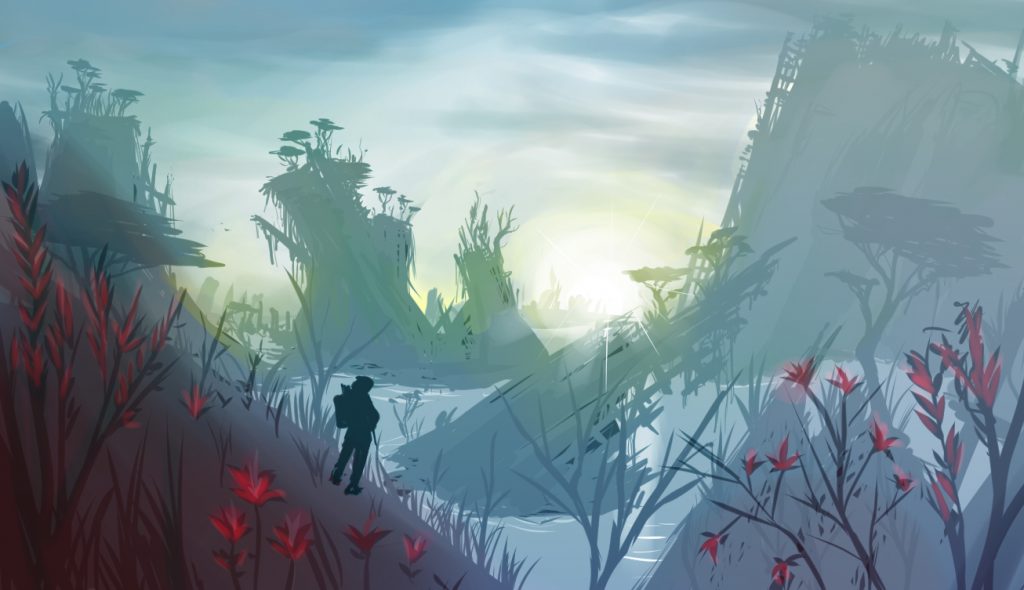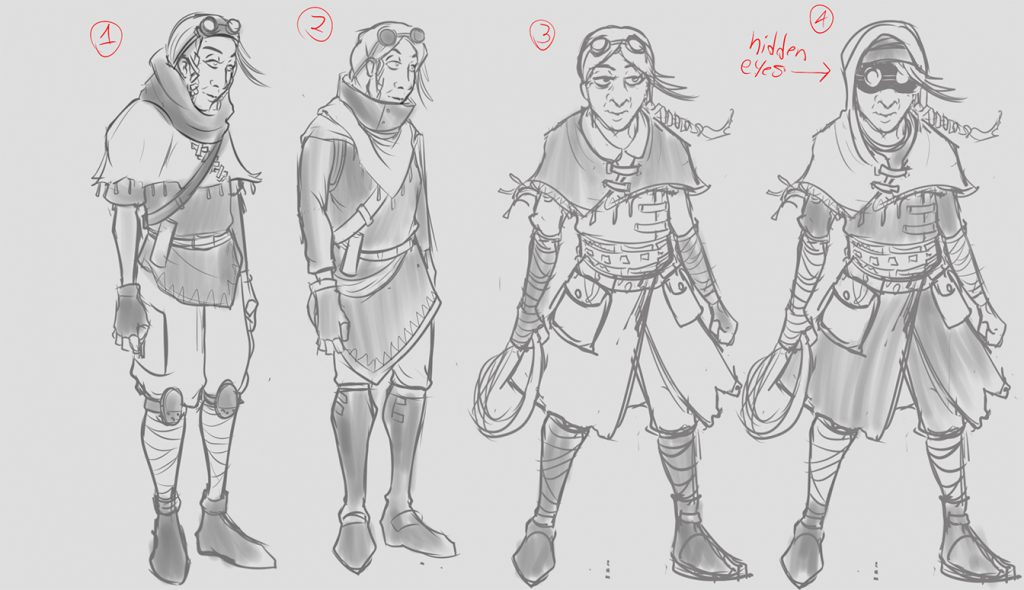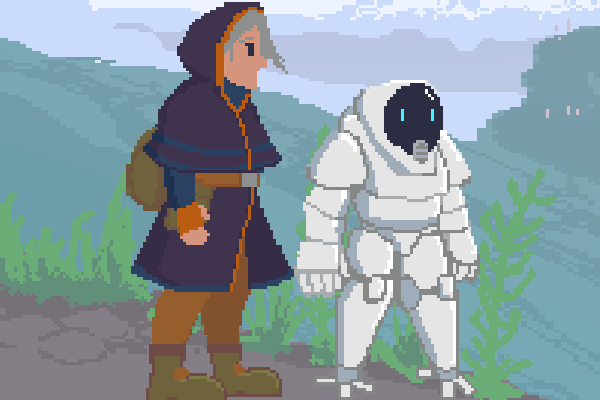Maize Longboat and the Contact project: Indigenous-led videogame development
by Maize Longboat
February 18, 2019

Updates
(2019-03-05): We have some exciting news to share! As of today, the Contact project has been given a new title: Terra Nova. The decision to give the game a more formal name came from the project team’s desire to better encapsulate the meaning of what this game is about. Although the main conflict of the game’s narrative is indeed first contact, Terra Nova is truly about its two main characters, the worlds that have shaped them, and the future worlds yet to come.
Terra Nova also has its own website! There you can sign-up to receive updates on future play tests and release dates. Visit www.terranovagame.com to learn more.
She:kon! Maize Longboat and creating contact:
My name is Maize Longboat and I’m a graduate research assistant with the Initiative for Indigenous Futures (IIF) and in my second-year of the Master’s in Media Studies program at Concordia’s Department of Communication Studies. Presently, I’m in the middle of working on the “creation” half of my research-creation thesis project that explores Indigenous videogame development. To do this, I’m making my very own game, from start to finish, to respond to the following research question:
“What makes Indigenous videogames and how will the game created as part of this project be informed by my own experience as an Indigenous person?”
I found a number of videogames made by or in consultation with Indigenous people that I will discuss in my research, all of which are unique in their own ways. It proved to be a challenge when my supervisor asked that I offer a hypothesis on what actually makes a videogame Indigenous. Indigenous identities are vastly diverse, so defining what is and what is not Indigenous is something that I alone cannot determine. However, I can offer what I feel are the most important qualities that an Indigenous videogame might carry with it. The following lines from my proposal clearly state where I stand:
“Whether an Indigenous videogame is made by an individual or team of Indigenous developers, or by non-Indigenous developers working in consultation with an Indigenous community, it is determined by Indigenous peoples. The development process, from beginning to end, must be Indigenous-led.”
This is exactly what I set out to do in creating my own game. The only challenge was that I had never actually made a videogame before. Instead of beginning with a game mechanic like running, or jumping, or shooting projectiles, I started with a central scenario that I frequently come across while studying Indigenous histories. I wanted to make a game out of a moment of first contact between an Indigenous and Settler peoples. These moments of encounter and communication are always the spark of larger events; only recalled to frame larger, more important narratives that come after. This game focuses on the lead-up and moment of first contact between Indigenous characters and Settler characters and how they react to one another’s presences.
Thanks to the generosity of the Hexagram Network and Social Science and Humanities Research Council, I have the funds to hire a small team to help fill in for my technical shortcomings. I brought in a Lead Developer, Mehrdad Dedashti (mdehdashti.com), to handle programming and integration tasks, an artist, Ray Caplin (portfolioofraycaplin.tumblr.com), to create visual assets and animations, and a sound designer, Beatrix Moesrch (framingnoise.com), to bring the game-world to life. It was really important for me to get people who not only had strong technical skills, but who also cared about working on an Indigenous-led project. I had to go through a few interviews before I could settle on a team that I could trust to support my research in that very specific way.
As I assembled the team, I was also designing a narrative that would speak to my central game scenario of first contact. The story takes place on Earth far in the future, long after an environmental catastrophe forced a number of humans to abandon the planet in an attempt to settle somewhere better out in space. The humans that were forced to stay on Earth adapted to their new environment and eventually forgot about the ones that had left them behind. Earth is still healing and high-water levels from melted polar ice caps cause erratic weather patterns. Earthborn humans live high atop the overgrown, ruined city-structures built ages ago to escape these unpredictable tides.

After several millennia of attempting to locate a habitable planet, Starborn humans have now unknowingly returned to their ancestral homeland to finally settle.
After several millennia of attempting to locate a habitable planet, Starborn humans have now unknowingly returned to their ancestral homeland to finally settle.

This moment of first contact between Earthborn and Starborn humans is experienced through the eyes of Terra, an elder Earthborn landkeeper, and Nova, a Starborn youth.



The game will offer a two-player, cooperative experience where each player plays as either Terra or Nova simultaneously. Both players can interact with each other, non-player characters, and objects in the environment to progress through the narrative. At first, each player starts in their own specific zones before the Starborn spaceship crash lands on Earth. The crash separates Nova from his community, while Terra witnesses the crash and sets out to investigate. The two eventually come across one another, sharing that moment of first contact between Indigenous and Settler peoples, and must then cooperate to help Nova find his people and ensure that Terra can find out what the Starborn people want.
I’ll be working with my team for the next several weeks to finish the game so that we can move into the playtesting phase. (Stay tuned in to AbTeC social media feeds for the exact date and time!) After the playtests I will be taking the reflections provided by players and making final changes right before I dive headfirst into the writing process.
Wish us luck!